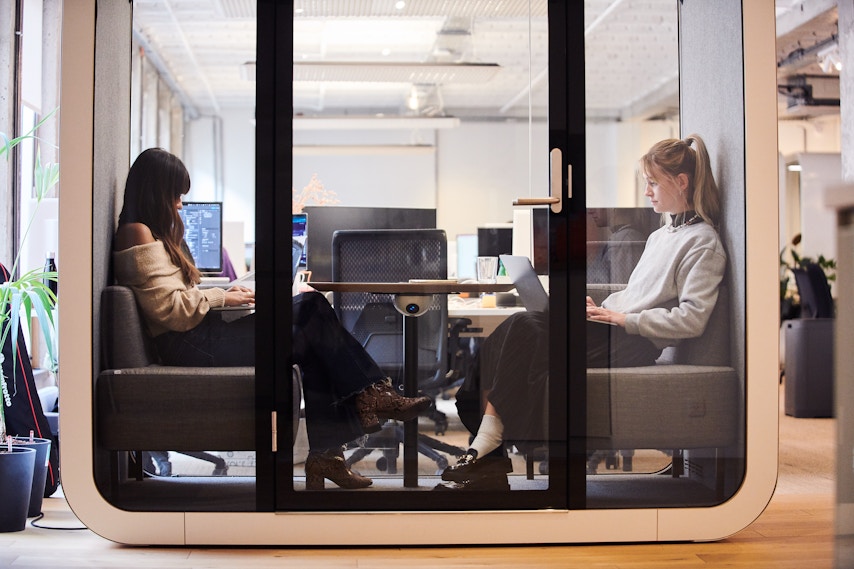2025/2026 Tax Year - What's Changing?

It’s that time of year again.
As one tax year comes to a close, another one begins. More often than not, that usually means new tax changes and regulations coming into effect.
Whether you’re the type of person who absolutely geeks out on this kind of stuff or the words ‘tax changes’ make you want to run a mile, know that you can count on our in-house CIPP payroll experts and us to break things down. We aim to be your go-to source for new tax year information and payroll.
So, let’s look at what’s changing in 2025/2026.
PayFit Top Tip:
This time of year tends to get busy, so the earlier you start to prepare, the smoother things will go.
12 key changes to action this new tax year
Here are 12 new tax year changes from HMRC for the 2025/2026 tax year. For more general information on closing out the current tax year, check out this overview on how to prepare for the new tax year.
National Minimum Wage (NMW)/ National Living Wage (NLW) rates confirmed
First up on the agenda is the National Minimum Wage (NMW).
As per the announcement in last year’s Autumn Budget, the NMW will increase on the 6th of April 2025 to £12.21 for those aged over 21.
For workers who fall into the 18-20 year old bracket, wages will increase to £10.00.
And for those aged 16-17 or above, the apprentice rate will change to £7.55 per hour.
See the table below for new rates and how they’ve changed from last year.
| Age | Change | Hourly rate |
|---|---|---|
| 21+ | ⬆️ | £12.21 |
| 18-20 | ⬆️ | £10.00 |
| Under 18 | ⬆️ | £7.55 |
| Apprentice under 19 or over 19 and in first year of apprenticeship | ⬆️ | £7.55 |
Statutory leave rates also confirmed
As with minimum wage, another increase in statutory pay has also been announced for the new 2025/2026 tax year.
From April 2025, there will be new rates for statutory maternity, paternity and other parental and sick pay, as well as other benefits for employees who qualify. There is also a new weekly rate for Statutory Sick Pay (SSP) of £118.75, which comes into effect on the 6th of April.
You can see all of these in the following table:
| Statutory payment | Change | Rate |
|---|---|---|
| Statutory Paternity Pay (SPP) | ⬆️ | £187.18 |
| Statutory Maternity Pay (SMP) | ⬆️ | £187.18 |
| Shared Parental Pay (ShPP) | ⬆️ | £187.18 |
| Statutory Bereavement Leave (SBP) | ⬆️ | £187.18 |
| Statutory Adoption Pay (SAP) | ⬆️ | £187.18 |
| Statutory Neonatal Care Pay (SNCP) | ⬆️ | £187.18 |
| Statutory Sick Pay (SSP) | ⬆️ | £118.75 |
National insurance threshold changes
The following rates apply from April.
| Threshold | Change | Monthly | Annual |
|---|---|---|---|
| Lower earnings limit (LEL) | ⬆️ | £542 | £6500 |
| Primary Threshold (PT) | ➡️ | £1,048 | £12,570 |
| Secondary Threshold (ST) | ⬇️ | £417 | £5,000 |
| Upper Earnings Limit (UEL) | ➡️ | £4,189 | £50,270 |
| Upper Secondary Threshold (UST) | ➡️ | £4,189 | £50,270 |
| Apprentice Upper Secondary Threshold (AUST) | ➡️ | £4,189 | £50,270 |
| Veterans Upper Secondary Threshold (VUST) | ➡️ | £4,189 | £50,270 |
| Investment Zone Upper Secondary Threshold (IVUST) | 🆕 | £2,083 | £25,000 |
| Freeport Upper Secondary Threshold (FUST) | ➡️ | £2,083 | £25,000 |
Employer Class 1 national insurance rate increase
Perhaps the biggest announcement from the Autumn Budget in 2024 was an increase to Employer National Insurance. In April, the employer’s rate for class 1 National Insurance will increase by 1.2 points, from 13.8% to 15%. These rates apply from your first pay date on or after 6th of April.
| NI category | Below PT | Above PT |
|---|---|---|
| Standard A, B, C, J | 0% | 15% |
| Below FUST or IVUST | Above FUST or IVUST | |
| Standard D, E, F, I, K, L, N, S | 0% | 15% |
| Below AUST, VUST OR AUST | Above AUST, VUST or AUST | |
| Aprrentices, veterans or under 21 H, M, V, Z | 0% | 15% |
Similarly, the Class 1A rate on Benefits in Kind (BiKs) reported on a P11D(b), and termination payments have increased by 1.2 percentage points from 13.8% to 15%.
The Class 1B rate on BiKs reported on a PSA will also increase by 1.2 percentage points from 13.8% to 15%.
New employment allowance
There will be a significant bump in the employment allowance from £5,000 pa to £10,500pa in 2025/2026. The eligibility criteria is also becoming less restrictive. For more information about employment allowance, please refer to our Help Centre article.
Small employer's relief
The small employer's relief rate is also increasing from 103% (100% + 3% compensation) to 108.5% (100% + 8.5% compensation). You can find out more information about small employer's relief on our Help Centre.
Student loan thresholds
These rates apply from your first pay date on or after the 6th of April.
| Plan type | Rate | Threshold change | Monthly | Annual |
|---|---|---|---|---|
| 1 | 6% | ⬆️ | £2,172.08 | £26,065.00 |
| 2 | 6% | ⬆️ | £2,372.50 | £28,470.00 |
| 4 | 6% | ⬆️ | £2,728.75 | £32,745.00 |
| Post-graduate loan | 9% | ➡️ | £1,750 | £21,000.00 |
New Scottish tax band and thresholds
While the Scottish tax rates have not changed, the Starter and Basic Rate thresholds have increased. These apply from your first pay date on or after the 6th of April.
| Band | Rate change | Rate | Threshold change | Annual threshold |
|---|---|---|---|---|
| Scottish Starter Rate | ➡️ | 19% | ⬆️ | £1-£2,827 |
| Scottish Basic Rate | ➡️ | 20% | ⬆️ | £2,828-£14,921 |
| Scottish Intermediate Rate | ➡️ | 21% | ⬆️ | £14,922-£31,092 |
| Scottish Higher Rate | ➡️ | 42% | ⬆️ | £31,093-£62,430 |
| Scottish Advanced Rate | ➡️ | 45% | ➡️ | £62,431-£125,140 |
| Scottish Top Rate | ➡️ | 48% | ➡️ | £125,141+ |
Other changes to look out for in 2025
In addition to all the new laws and rates listed above, here’s what else to look out for in 2025/2026
The Paternity Leave (Bereavement) Act 2024
This new law received Royal Assent in May 2024 and is expected to come into force sometime in 2025, making paternity leave a ‘day one’ right for bereavement partners. No date has been confirmed yet.
Draft Equality (Race and Disability) Bill
As announced in the King’s Speech in July 2024, the Government plans to introduce a draft of this Bill (though it still requires significant consultation). It will set out the right to equal pay for ethnic minorities and disabled people, as well as reporting requirements for ethnicity and disability pay gaps where employers have 250+ employees.
Right to Disconnect
While not included in the Employment Rights Bill, the Government plans to introduce a new ‘right to switch off’ through a new Statutory Code of Practice. This will give employees the right to disconnect from work outside of working hours, but it is unclear when this will come into force.
The Employment Rights Bill
Last but certainly not least, the Employment Rights Bill proposes sweeping changes to employment rights through a series of 28 individual employment reforms, including:
Removing the two-year qualifying period for unfair dismissal protection; ‘day one’ rights for paternity, parental and bereavement leave
The end of ‘exploitative’ zero-hour contracts
The restriction of ‘fire and rehire’ practices
Revising current thresholds for collective redundancy (consultation pending)
Amends to flexible working law
Amends to statutory sick pay eligibility requirements
A revision of employer’s duty to prevent sexual harassment and third-party harassment in the workplace
Enhanced protection for the dismissal of pregnant women
The extension of time limits for bringing Employment Tribunal claims from three months to six months
Repealing the Minimum Service Levels introduced by the previous Government, simplifying trade union recognition and enhancing protection for those taking industrial action
Most of the changes proposed won’t come into effect until 2026. However, the Government has begun the process of carrying out consultations on several of these. While no specific dates have been confirmed, it’s important for employers and businesses to ‘watch this space’ and submit their views where possible.
Special announcement: payrolling benefits will become mandatory…
It's worth noting as well that from the the 6th of April 2026, payrolling benefits will become mandatory.
For businesses not yet enrolled onto this scheme, this is where employees pay their tax on benefits (and sometimes Class 1 NI) directly through payroll in real-time. The alternative has been to submit P11Ds directly to HMRC by the 6th of July of the new tax year, but this method will be discontinued in 2026.
Are you ready for the new tax year?
At PayFit, we’ve baked payroll compliance into every single part of our solution.
Our clients rest easy, knowing their monthly payroll will be fully compliant, even if they’re not up to speed with all the latest changes from HMRC.
You can run your payroll seamlessly, from automating payroll and HMRC submissions to producing HR and finance reports explicitly tailored to your organisation. No painstaking manual processes needed.
And to make it a little easier we have our checklist that provides you with all the important deadlines you need to know for the end and start of the tax year.
How To Work Out Hourly Rates In The UK - An Employers' Guide
Recruitment Process Guide - Stages, Selection, Automation
Employee Contracts - A Guide For UK Businesses
Part Time Workers' Holiday Entitlement - Guide & Calculator








